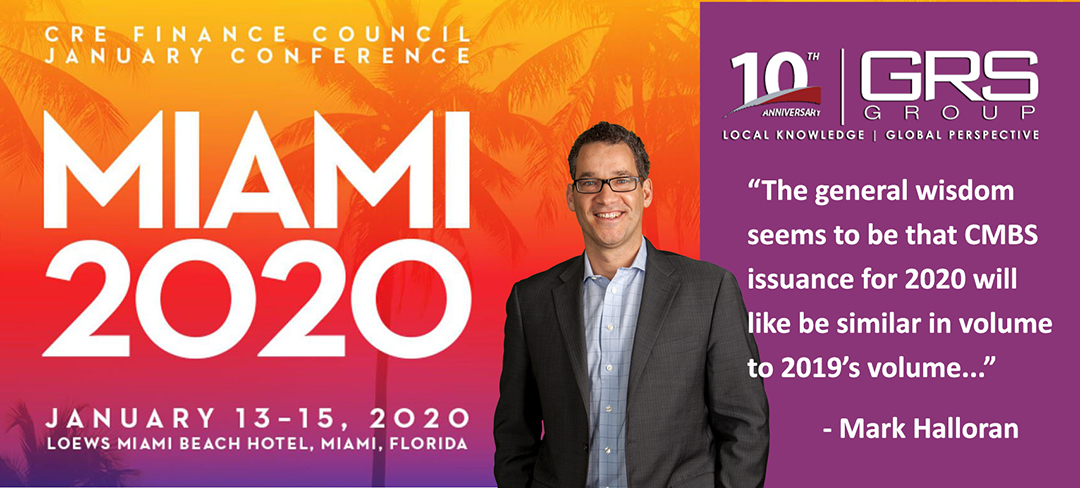Right around the corner from the Super Bowl, at Miami’s Hard Rock Stadium, the CRE Finance Council had its annual conference in South Beach. There was a lot of discussion about CMBS lending, the best-performing commercial real estate sectors and how the economy is performing in general. We took a few minutes with GRS Group’s own Mark Halloran, who was in attendance and has some views about where commercial real estate is headed in the coming year.
What did attendees think about the CMBS market for the coming year? Will we see more of those deals in 2020?
The general wisdom seems to be that CMBS issuance for 2020 will like be similar in volume to 2019’s volume. The capped production volume for the GSEs in place for 2020, could provide an opportunity for increased volume if these lenders are forced to sideline their production as they did mid-2019.
Were any property sectors talked about with a great deal of enthusiasm, or speculation?
As has been the case since the CRE sector began to recover from the Great Recession, multifamily property is still the industry darling. While we have seen a reduction in sale prices for multifamily properties in gateway sites like New York, they are numerous bridge, portfolio and life companies and securitized lenders that are still bullish on this segment. Lenders will stay active in this segment, from gateway to tertiary locations, executing loans on the full spectrum of MF properties via popular GSE small-balance platforms, select CMBS small balance programs, bridge and transitional-to-permanent products, to more typical portfolio, CMBS and life companies executions.
Were any major concerns talked about that could knock the economy off of its strong run?
As we commonly see at early-year conferences, the gathering has a decidedly upbeat feel. Many of those on panels are promoting their platforms and are likely not to rain doom and gloom on their attentive audience. Interest rates are low, capital is available, GDP and employment indicators have slowed but are in positive territory and most property segments (save for maybe regional malls) are healthy. That said, everyone realizes we’re near some inflection point in the CRE cycle, but no one is predicting a down cycle in the near term. There was ample discussion on topics the could influence the direction of the economy; the move away from LIBOR to SOFR, to maybe more engaging topics of climate volatility (see Davos), options to increase access to affordable or workforce housing, and of course the run up to, and the results of the 2020 elections.
What’s new for 2020?
The acronym of the conference for me was ESG. Not Edward S Gordon, but Environment, Social and Governance. Encouragingly, ESG is becoming an important consideration in the investment strategies of CRE players. There is research that suggest acting in accordance with sustainable and socially responsible parameters is simply good business. Defining these parameters is not a simple task, given the myriad of factors impacting the performance of CRE and financial institutions. Loan production under Fannie Mae’s and Freddie’s revised green lending platforms may be one indicator of the greater adoption of ESG, as will the interest in CRE bonds issued by the GSEs. This process will continue to evolve over the new decade, now that it appears to have taken a more prominent place in board room discussions.
About GRS Group
On the leading edge of innovation in commercial real estate transactions, Global Realty Services Group provides its clients with unsurpassed expertise in the areas of Transaction Services, Title Insurance and Sustainability Solutions. With offices across the United States, Europe, and affiliates around the globe, GRS Group provides local market knowledge with a global perspective for institutional real estate investors, occupiers and lenders worldwide. The GRS Group team has evaluated and advised on over $1 trillion in CRE transactions.

